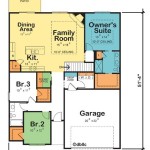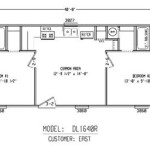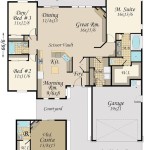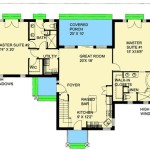Building Plans for Kitchen Island: A Comprehensive Guide
The kitchen island has evolved from a simple workspace to a central hub within the modern home. It serves as a preparation area, a dining space, a social gathering point, and even a storage solution. Before embarking on a kitchen island construction project, meticulous planning is essential. This article presents a comprehensive overview of building plans for kitchen islands, covering crucial factors and considerations for a successful outcome.
Initial considerations include determining the available space. Measuring the kitchen area accurately is paramount. The island should not obstruct the natural traffic flow within the kitchen. A minimum of 36 inches of clearance space is generally recommended around the island’s perimeter, but 42-48 inches is preferable to comfortably accommodate movement around working areas, such as the stove and refrigerator. The size of the island itself will depend on the available space and the intended functions it will serve.
Next, consider the functionality required from the kitchen island. Is it primarily for food preparation, incorporating a sink or cooktop? Will it serve as a breakfast bar with seating? Is significant storage needed, requiring cabinets, drawers, or shelving? Understanding the intended functions will directly influence the design and layout of the island.
Once the space and functionality are defined, the design phase can begin. This involves sketching out various layouts, considering the placement of appliances (if any), the type of countertop material, the style of cabinetry, and the overall aesthetic of the island. Software like SketchUp, Chief Architect, or even simpler online tools can aid in visualizing the final product.
Key Point 1: Design Considerations and Layout
The design of a kitchen island directly dictates its utility and integration into the kitchen's aesthetic. Several critical elements merit careful consideration during this phase. The shape of the island, whether rectangular, square, L-shaped, or even circular, significantly impacts the workflow and traffic patterns within the kitchen. Rectangular islands are generally the most common due to their versatility and efficient use of space. L-shaped islands can be effective in larger kitchens, creating a natural separation between cooking and dining areas. Circular islands can be aesthetically appealing but may require more space and careful planning to integrate seamlessly.
Countertop selection is another essential aspect. Materials like granite, quartz, marble, butcher block, and stainless steel offer different aesthetic qualities and performance characteristics. Granite and quartz are durable and heat-resistant, making them ideal for food preparation. Butcher block provides a warm, natural look but requires regular maintenance. Stainless steel is hygienic and easy to clean, often preferred in professional kitchens. The countertop overhang should also be considered, especially if the island includes seating. A 12-inch overhang is generally recommended for comfortable knee space.
Storage solutions within the island should be tailored to the specific needs of the homeowner. Cabinets with adjustable shelves provide flexible storage for pots, pans, and other kitchen essentials. Drawers are ideal for storing utensils, cutlery, and smaller items. Open shelving can be used to display cookbooks, decorative items, or frequently used ingredients. Incorporating pull-out organizers, such as spice racks or waste containers, can further enhance the island's functionality.
Electrical outlets are crucial for powering appliances and charging devices. Building codes typically require at least one outlet on an island countertop, and additional outlets may be needed depending on the intended use. Adequate lighting is also essential. Pendant lights above the island can provide task lighting for food preparation and create a visually appealing focal point. Under-cabinet lighting can illuminate the countertop surface, improving visibility and safety.
Key Point 2: Structural Integrity and Material Selection
The structural integrity of the kitchen island is paramount for safety and longevity. The island’s frame should be constructed from sturdy materials, such as solid wood or plywood. The frame should be adequately reinforced to support the weight of the countertop, appliances, and any items stored within the island. Corner bracing and proper joinery techniques are essential to ensure the frame remains stable and square over time.
Material selection plays a significant role in the island’s durability and aesthetic appeal. Solid wood frames offer excellent strength and can be stained or painted to match the kitchen’s décor. Plywood frames are a more cost-effective option but should be constructed from high-quality plywood with a smooth surface for finishing. The exterior of the island can be clad in various materials, such as wood panels, beadboard, or decorative trim. The choice of material will depend on the desired aesthetic and budget.
Plumbing considerations arise if the island includes a sink or dishwasher. Proper plumbing connections must be installed to supply water and drain wastewater. This typically involves running pipes under the floor or through the wall to connect to the existing plumbing system. A licensed plumber should be consulted to ensure the plumbing is installed correctly and complies with local building codes. Similarly, electrical work should be performed by a qualified electrician to ensure safety and compliance.
Ventilation is a concern if the island includes a cooktop. A downdraft vent or a range hood is necessary to remove smoke, odors, and grease from the air. Downdraft vents are integrated into the cooktop and draw air downwards. Range hoods are mounted above the cooktop and vent air upwards. The choice between a downdraft vent and a range hood will depend on the kitchen’s layout and the homeowner’s preferences.
Key Point 3: Building Codes and Permits
Compliance with local building codes is essential for any kitchen island project. Building codes are designed to ensure the safety and structural integrity of buildings, and they address various aspects of construction, including electrical, plumbing, and ventilation. Before starting construction, it is crucial to research the local building codes and obtain any necessary permits.
The permit process typically involves submitting detailed building plans to the local building department for review. The plans should include information about the island’s dimensions, materials, construction methods, and electrical and plumbing systems. The building department will review the plans to ensure they comply with the building codes. If the plans are approved, a permit will be issued, allowing construction to begin.
Inspections are typically required at various stages of the construction process to ensure compliance with the building codes. Electrical inspections are conducted to verify the wiring is installed correctly and safely. Plumbing inspections are conducted to verify the plumbing connections are leak-free and comply with the codes. A final inspection is conducted upon completion of the project to ensure all aspects of the construction meet the required standards.
Failure to comply with building codes can result in fines, delays, or even the requirement to tear down and rebuild non-compliant structures. Obtaining the necessary permits and scheduling inspections is crucial to avoid these problems and ensure the kitchen island is safe and compliant with all applicable regulations.
A detailed materials list is a crucial component of the planning phase. This list should include all the necessary lumber, plywood, hardware, countertop material, appliances, plumbing fixtures, and electrical components. Estimating the quantity of each material accurately can help prevent shortages and delays during construction. It is also advisable to factor in a contingency of approximately 10% to account for waste and unexpected issues.
The construction process itself involves several key steps. First, the frame of the island is assembled, ensuring it is square and level. Then, the exterior of the island is clad in the chosen material. Next, the countertop is installed, carefully adhering to the manufacturer’s instructions. If the island includes a sink or cooktop, the plumbing and electrical connections are made. Finally, the hardware, such as handles and knobs, is installed. Throughout the construction process, it is essential to maintain accuracy and attention to detail to ensure a high-quality finished product.
Safety is of paramount importance during the construction process. Eye protection, gloves, and a dust mask should be worn when working with power tools. A well-ventilated workspace is essential to avoid inhaling harmful fumes. Power tools should be used according to the manufacturer’s instructions, and caution should be exercised to prevent accidents. If unsure about any aspect of the construction process, consulting with a professional contractor or carpenter is advisable.
Planning for the kitchen island's future use is important. Consider whether the needs might change over time. Will additional storage be required? Will the island need to be modified to accommodate new appliances? Designing the island with flexibility in mind can extend its lifespan and ensure it remains functional for years to come. For example, incorporating adjustable shelves or leaving space for future appliance upgrades can enhance the island’s adaptability.

Build A Kitchen Island

Build A Diy Kitchen Island Basic
:max_bytes(150000):strip_icc()/designs-by-studio-c-free-kitchen-island-plans-584ae54d5f9b58a8cd492153.jpg?strip=all)
18 Great Diy Plans For Kitchen Islands

How To Build A Diy Kitchen Island House By The Bay Design
:max_bytes(150000):strip_icc()/KISLAND51-5a81bc963037130036439389.jpg?strip=all)
18 Great Diy Plans For Kitchen Islands

Best Free Kitchen Island Building Plans Build Basic
How To Build A Diy Kitchen Island

Kitchen Island Dimensions Essential Size Spacing Guide January 2025

Build A Diy Kitchen Island Basic

Kitchen Layout Ideas For An Ideal Roomsketcher








